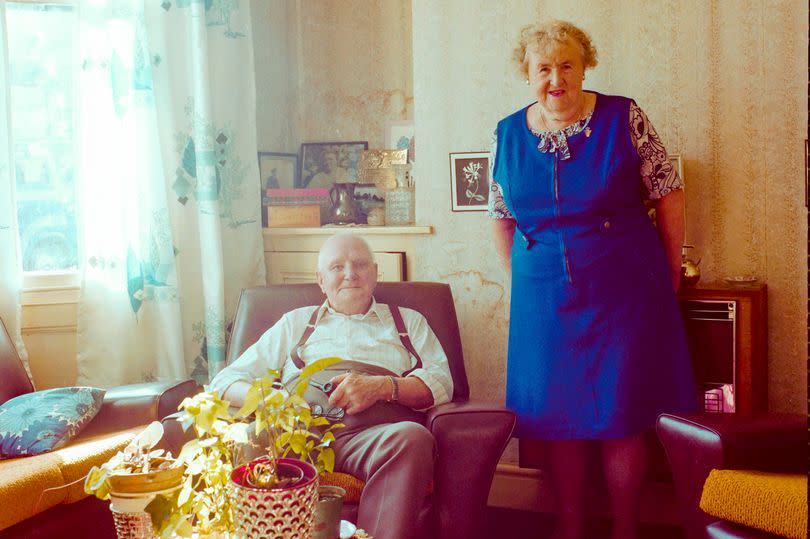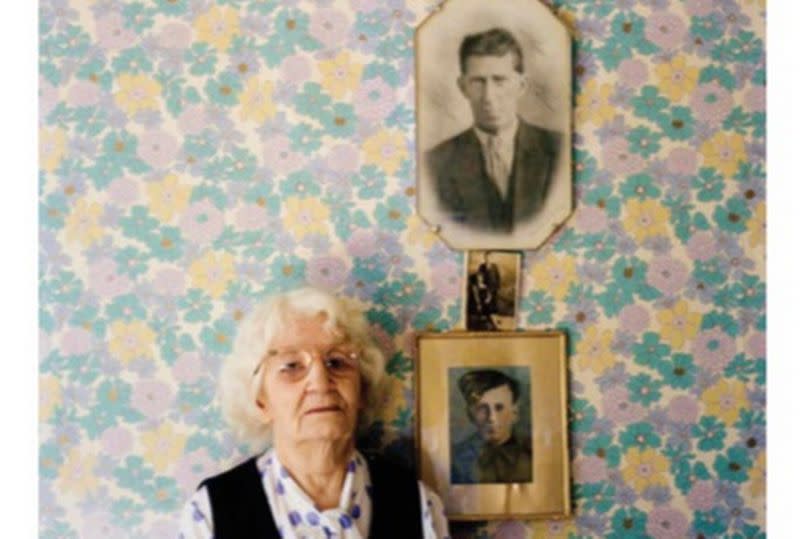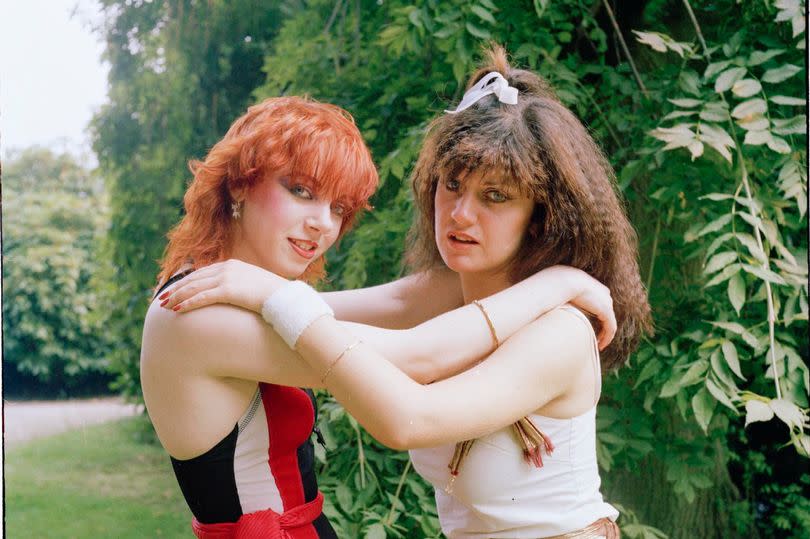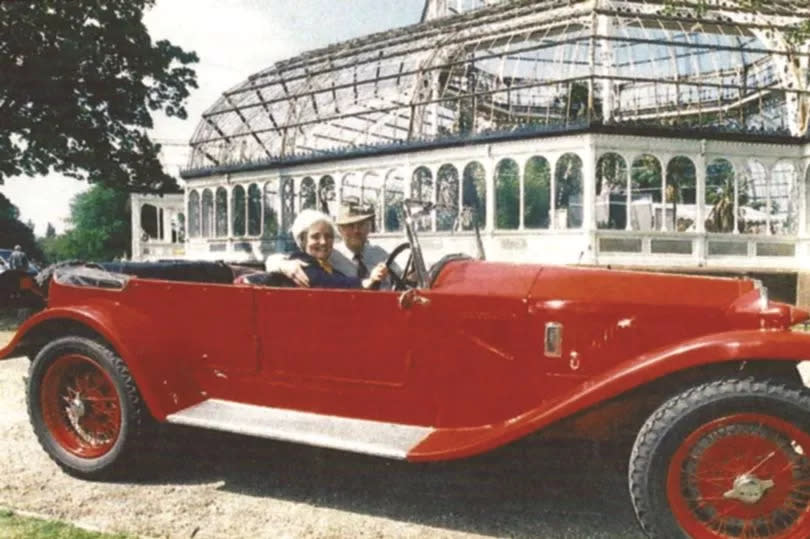Untold stories from Liverpool characters and 'life on the Lane'

One of the most well known streets in Liverpool, Lark Lane has long been a popular place for socialising and today boasts an eclectic mix of bars, restaurants and independent businesses.
Situated between Sefton Park and Aigburth Road, the street is lined with properties built in the Victorian era - with some even older -and records from the early 19th century show Lark Lane had been established long before the creation of Sefton Park, which opened in 1872. But for those who grew up in and around the area, their childhood and life around them looked very different to what we know it to be today.
Like many other areas, as the decades have went on, we have seen a number of changes, from businesses that have come and gone to new generations calling 'the Lane' home. Back in the 1980s, Kay Flavell moved to near Lark Lane with her family after living on Merseyside for a few years.
READ MORE: Country park a short drive from Liverpool with stunning views and beautiful coffee shop
READ MORE: D-Day craft that became 'glamorous' floating Liverpool nightclub
Fascinated with the area, when Kay took time off from commuting and working at a university in London she became immersed in the people and stories of Lark Lane. Wanting to capture the stories and memories of those who lived there, Kay conducted several interviews on her tape recorder - stories that would go unheard for decades.
As part of the Liverpool ECHO's How It Used To Be series, we spoke to Kay about her memories of Lark Lane and untold stories from the past and the present. Kay, 81, told the ECHO: "In 1980, I actually took a year's unpaid leave from my job in London and we rented a house in Pelham Grove just off Lark Lane. I was working on another book project I had started on a German artist and I went up and down the Lane and fell in love with it.

"The shops were not all restaurants. Back then there was just a huge variety.
"Everything was happening on the Lane. The residents were in and out of the shops, everybody knew everybody and it was a fascinating community to be a part of.
Do you have a story for our How It Used To be series? Let us know in the comments section below.
‘I loved the people. Liverpool people speak from the heart and I just loved that. I love the way Liverpudlians enjoy life.
"The stories being told in the shops, they were all like little clubs and I thought I need to record the stories of this place because it's changing so fast. The era of masters and servants, the older people in the big houses still living here, then there was the new generation coming along.
"I ended up two days a week roaming up and down the Lane in my black beret and sitting in the shops and putting together the stories. I did that for the better part of 1980 and 1981."

In that time, Kay interviewed everyone from pub landlords to hairdressers, a book seller, a garage owner and more - capturing what life was like on Lark Lane at that time and memories going back generations. Kay said: "I felt like I was really understanding Britain in a much more intimate way then I had before.
"For example, a florist, Mrs Tonkiss grew up on the Lane when the bombs were dropping. Going out one night, it was raining and she slipped on the step and because the police station was still a police station at that time, there was a bobby going past and he picked her up.
"He said how about going to the pictures and that was the start of their romance. It's interweaving of the lives across the generations that makes it such a great place to be and it was such an honour to collect the stories.
"It's been totally totally thrilling and I just felt disappointed that I hadn't been able to complete the job earlier on and I thought I never would be able to. And because of new technology and Facebook, that has been possible."
In August 1983, Kay and her family moved to California, taking the tapes and transcripts with her. Four decades on, she rediscovered them.
Kay said: "The years went by and in 2019, 40 years on, another project brought me back to Liverpool. In the month before, I started remembering those stories I collected so long ago and I found the transcripts that I hadn't digitised."

Archivists in Central Library suggested Kay should turn it into a book and from there, Kay was reunited with some of the people and stories from Lark Lane, as well as new faces. With the help of Bryan Briggs from The Bluecoat and local Helena Paxton, among trustees of the non-profit organization People of the Lane, the book - People of the Lane. Living in and around Lark Lane, 1880-2020 - was published in 2021.
In the early 80s, Kay commissioned photographer Tom Wood to take photos of interviewees and life around Lark Lane, photos she was reunited with for the project. Born in Ireland, Tom, now in his 70s, moved to Merseyside in 1978 earned the nickname "Photie Man" and last year, an exhibition at the Walker Art Gallery celebrated over half a century of his work.
The book features many characters and memories from in and around Lark Lane, beginning with mum-of-six Margaret McClean and also includes Jane and Jim Baxter, who launched the campaign to restore the Palm House in the 1990s, as well as the Evans family, Denyze Alleyne-Johnson and Mandarin Orange, performers at Larks in the Park and more.
Brilliant images, courtesy of Kay and taken by photographer Tom Wood show the people of the Lane and offer a glimpse into what life was like in the area in years gone by. Local Facebook page, People from around Lark Lane, also enabled Kay to finish the book, collecting stories for the final chapter to include memories from across generations and this weekend, profits from the book with be donated to several local charities.
Kay said: "I want to say thank you to Liverpool. Lark Lane started me off on what I've continued to do everywhere I've lived - to collect stories of that place.
"It's a wonderfully rewarding thing to do. I'm very very grateful that my life brought me to the Lane."
Kay's book, People of the Lane. Living in and around Lark Lane, 1880-2020, was first published in 2021. Copies are available at News from Nowhere, the Bluecoat Gallery shop, or to order via Waterstones.
Receive newsletters with the latest news, sport and what's on updates from the Liverpool ECHO by signing up here

 Yahoo News
Yahoo News 
